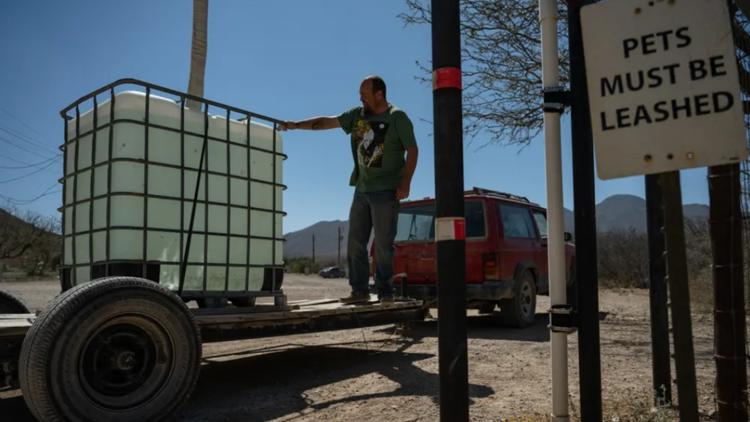ODESSA, Texas — This article was originally published by our content partners at the Texas Tribune. Read the original article here.
To cope with a growing population and increasing demand for water, a popular resort and residential complex in Terlingua told its residents that it would limit water sales.
The eight-member board overseeing 200,000 acres of privately owned land and short-term rentals called Terlingua Ranch Lodge — about 70 miles from the Big Bend National Park — sells drinking and nondrinking water to permanent residents. Many rely on the association for their monthly supply.
But for the first time starting in September, the board will reduce the amount of nondrinking water residents can purchase monthly if the well water levels begin to drop. Board members hope to avoid running out of water again, as in 2018 when one of the ranch’s five wells dried up.
“We’ve created a dependency,” Larry Sunderland, the association’s water committee chair, told The Texas Tribune last June. Sunderland said then that residents shouldn’t rely on the ranch wells because they weren’t drilled to sustain the ranch’s existing population and accommodate tourists.
The water scarcity in this West Texas village is a microcosm of the state’s own water crisis. Texas’ booming population is straining water systems and supplies, and the state is only beginning to meet the demand. The Texas Water Development Board, which manages the state’s supply, began distributing $1 billion in taxpayer-approved dollars for urgent projects addressing those needs. In Terlingua, this is the first step to conserving water and the start to understanding how much water flows underneath them.
“Everything is a guess at this point,” Sunderland said of the water coming out of the well, adding that the technology will help property owners manage their water needs by knowing how much water the board has available.
Dues-paying property owners can purchase a set amount of water monthly. The association’s charter says they can purchase 1,000 gallons of nondrinking water monthly. Each gallon costs 10 cents — $50 if they take the full amount. Property owners can get up to 25 gallons of free drinkable water every week. Anything above that is 25 cents per gallon.
Its unclear how much water these new limits will save. More than 5,000 people own property on the ranch. But most don’t live there, and the number of full-time residents changes frequently.
The ranch does not sell water to tourists. It will not issue limits for tourists who book short-term rental cabins and use the water.
Additional restriction may be possible based on water levels. The board, which owns five water wells, begin monitoring the wells using sounding tubes.
The board will use a 0-4 rating system to meausre the health of its wells. At 0, sales will be normal. At 1, the ranch will begin reducing water sales by 20%, to 800 gallons monthly. At 2 it will cut water sales by 50%. At 3, its second highest status, the board will cut 75% of the water it sells to just 125 gallons. And at 4, the highest rating, the ranch will stop selling water altogether until the well recovers.
Scientists, regulators and local officials are just beginning to uncover precisely how much water is beneath the soil in Terlingua. The Water Development Board has no precise map of the body of water, called an aquifer, in South Brewster County, where Terlingua sits.
The equipment monitoring the stages of the well will offer a glimpse. Sounding tubes detect the elevation levels of a water well. When the tube reaches water, the tube pulses, indicating the water level, said Kevin Urbanczyk, a professor of geology at Sul Ross University and board member of the Brewster County Groundwater Conservation District.
The board will use the sounding tube at the start of each month and publish the results on its website.
Urbanczyk said the sounding tubes provide limited information about the water that rises to the surface. Obtaining comprehensive data about the bed of water even further below requires a team of scientists, engineers, and funding — a time-consuming and expensive process. He said the conservation district has partnered with the ranch to study the available data. He plans to solicit funding and help from the Water Development Board in the future.
“Their wells are limited in their capacity, and they're trying to put Band-Aids on it,” he said. “And with that increasing population, I'm not surprised at all. I think that a conservation mindset is a really good step in the right direction for that.”
More Texas headlines:



